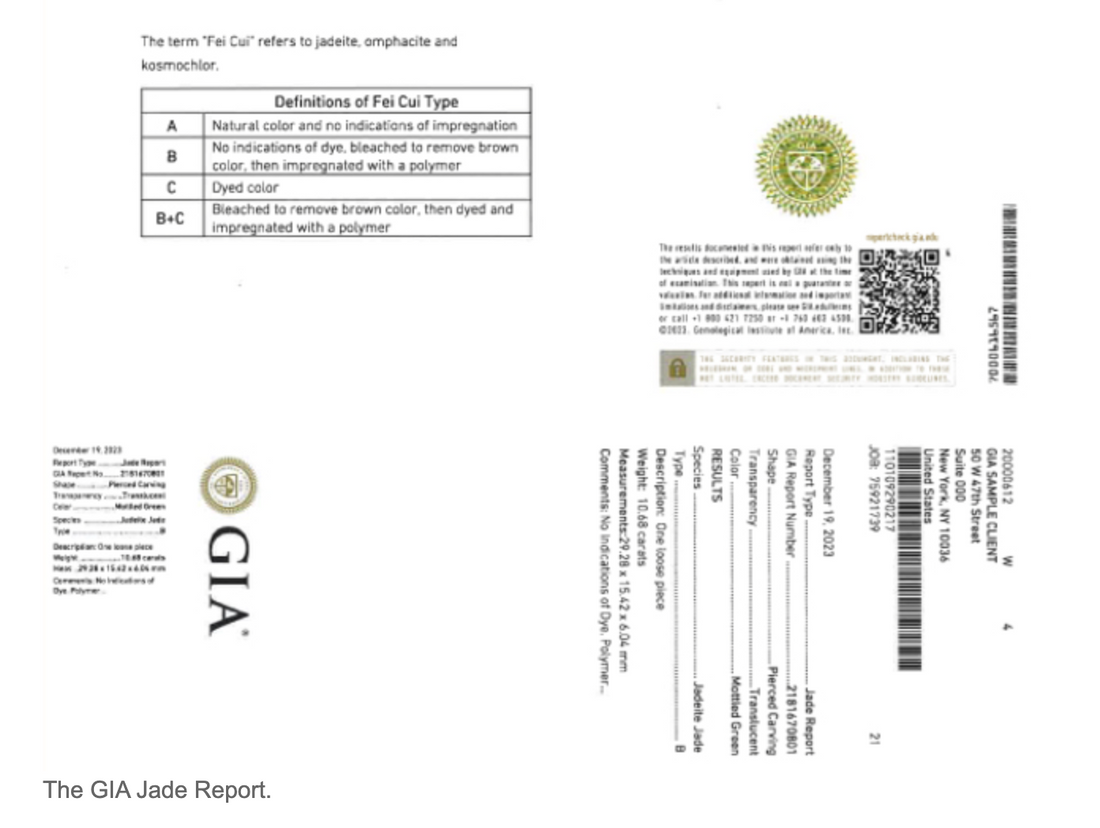
Natural vs. Treated: How to Spot Genuine Jadeite
In the world of jadeite, not all that glitters is pure.
While true jadeite (A-grade) is one of the most valuable gemstones on Earth, a significant portion of the market is flooded with treated, altered, or even fake material.
Understanding the difference is essential—not just for collectors, but for anyone who wants to wear jadeite with confidence.
✦ A, B, C: The Jadeite Grading You Must Know
Unlike diamonds, jadeite has no international grading body. However, in the Asian market, jadeite is commonly categorized into three types:
- A-grade:100% natural jadeite. No chemical treatment, only traditional polishing with wax. This is the only grade accepted by serious collectors and auction houses.
- B-grade:Chemically bleached with acid to remove impurities, then filled with polymer resin to regain translucency. It may look beautiful, but its structure is fragile—and value is near zero in the collector market.
- C-grade:On top of B-grade treatment, artificial coloring is added. The colors are often too bright or unnatural. Fades over time and can even leak dye.
Some stones are B+C, meaning both bleached and dyed.
✦ Why Treated Jade Is Dangerous
Treated jade might look appealing at first glance—but it poses serious risks:
- Brittle structure: Acid treatment weakens the jadeite’s crystal network. B-grade pieces can crack or break easily, even with light impact.
- Chemical residue: Some pieces still carry trace amounts of acid or resin, which may cause skin irritation.
- Deceptive pricing: B/C-grade jade is often sold at inflated prices to unknowing buyers—especially online or in tourist markets.
Put simply: treated jadeite is not just lower in value—it’s lower in integrity.
✦ How to Detect: Visual Clues and Lab Tests
While seasoned experts can often spot treated jade with the naked eye, consumers should rely on lab certification when in doubt. Here’s what helps:
- UV light test: B/C-grade jade may fluoresce due to resin or dye.
- Microscopic inspection: Acid etching leaves a characteristic “orange peel” texture.
- Infrared or Raman spectroscopy: Reveals polymer content.
- Trusted labs: Look for reports from institutions like GIA, GUILD, or NGTC.
Always request lab certification for high-value pieces.
✦ Protecting Yourself as a Buyer
- Ask for transparency: A reputable seller should clearly disclose whether a piece is natural or treated.
- Avoid too-good-to-be-true prices: If it looks like top-quality jade but costs less than your phone—it’s probably not A-grade.
- Build a relationship with your jeweler: Trust is worth more than a bargain.
At TATHATĀ, we only work with natural, untreated Grade-A Burmese jadeite, certified by top labs. Your trust is our foundation.
